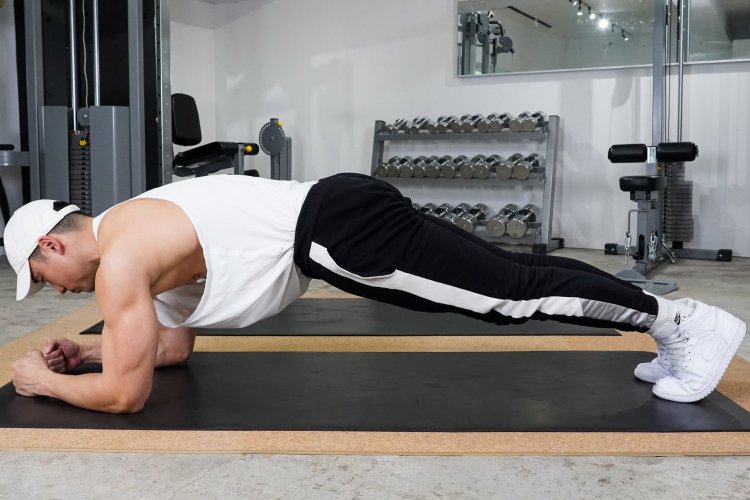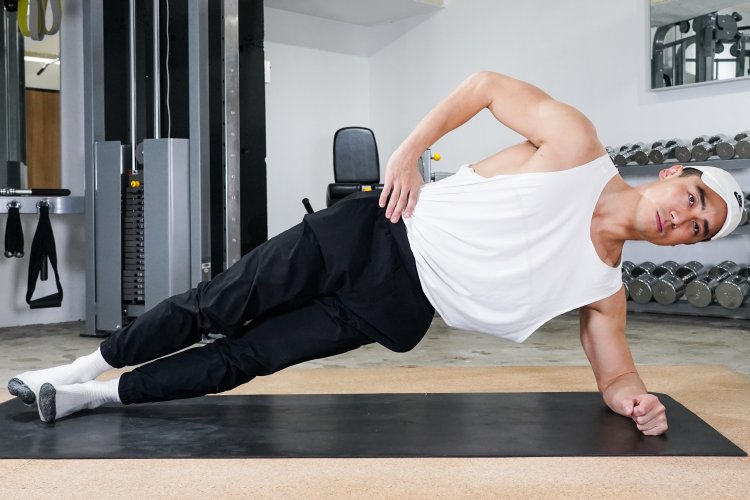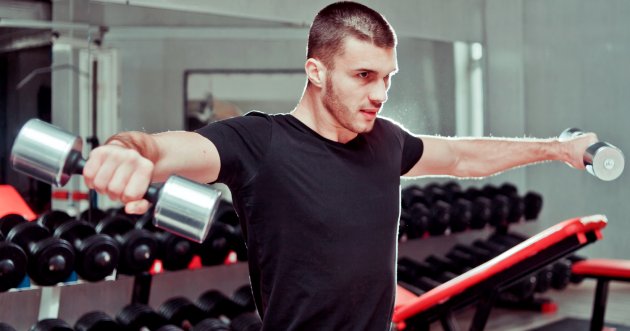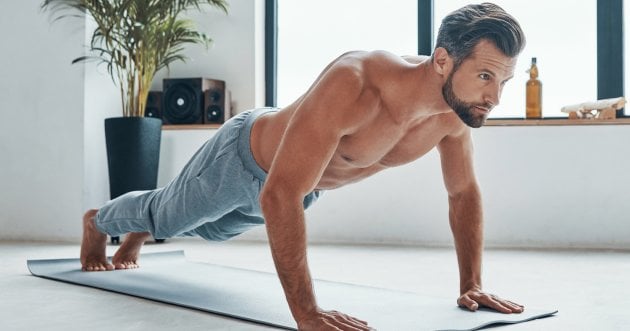
CONTENTS
- What is the transversus abdominis muscle? What role does it play?
- Should I train my transversus abdominis muscles? What are the benefits of training them?
- What are the disadvantages of a weakened transversus abdominis muscle?
- When you focus on the transversus abdominis muscle, you can make such a difference in the appearance of your upper body!
- 5 muscle training menus for the transversus abdominis! Introducing training that can be done at home, directly from the pros!
2 ページ以降を表示しています。
目次を表示Suponsered by
5 muscle training menus for the transversus abdominis! Introducing training that can be done at home, directly from the pros!
Transversus Abdominis Muscle Training (1) “Draw-In
Draw-in is an exercise in which you breathe while keeping your belly down. It can be done in bed and does not require any special skills, so it is recommended for those who are not good at exercising. It is a good idea to do it every day as much as possible, for example, making it a habit to do it in bed after waking up in the morning.
Lie on your back on the floor and place your hands comfortably at your sides. Stand by with your knees bent at 90 degrees to tilt your pelvis backward, as you cannot perform the movement well if your hips are bowed. Keeping this posture, take a deep breath and inflate your abdomen. Once fully inflated, slowly exhale to depress the belly. It is recommended to do three sets of ten times.
Transversus Abdominis Muscle Training (2) “Plank (Front Bridge)
The plank is one of the most popular core training exercises. It is the perfect exercise for those who want to tone up their abdominal muscles, as it loads not only the transversus abdominis but also the rectus abdominis and oblique muscles. However, be careful not to continue with incorrect form, as you may injure your lower back. If you tend to arch your back, it is important to loosen your pelvis and tilt it backward.
The plank is very easy to perform. All you have to do is lift yourself up from a prone position on your elbows, straighten your form, and hold it for a few seconds. It is easy to create a stable form by lifting the hips slightly upward, with an eye on working the abdomen. If you are doing this for the first time, start with 20 seconds, and as you get used to it, gradually increase the amount of time you hold for 30 seconds, then 1 minute, and so on.
Transversus abdominis muscle training (3) “Side plank (side bridge)
The side plank is an exercise in which the plank described above is performed facing sideways. The main target of this exercise is the oblique abdominal muscles, but it can also train the transversus abdominis muscles and the quadratus lumborum, which is one of the core muscles and is deeply involved in spinal stability. The difficulty level is higher than the normal plank because the body is supported by one arm, but the benefits to the abdominal area can be expected, so why not give it a try?
Lie on your side on the floor with your elbows bent and your legs extended. At this point, make sure that your head and toes are in a straight line. Once the posture is secure, lift the hips off the floor while supporting them with the forearms and legs, and hold. As with the plank, it is recommended to gradually increase the number of seconds.
Transversus abdominis muscle training (4) “Hip lift
Hip lifts, as the name suggests, are exercises in which the buttocks are raised and lowered. It is well known for its hip-enhancing effect, but in fact it is also effective for toning the abdominal area as it stimulates the transversus abdominis muscle. In this article, we will introduce three types of exercises: basic, abdominal muscle group, and high-intensity.
Let’s start with the basic exercise. Lie on the floor on your back with your feet about a foot away from your hips, palms down, hands at your sides. From that position, raise your buttocks and hold for one second when your knees are in a straight line with your stomach. From there, lower your hips until they just barely touch the floor, and then raise them again. Do 3 sets of 10 to 12 repetitions. As you get used to it, increase the amount of time you hold your hips above the floor, or try one of the hip lift derivatives I’m about to introduce.
If you want to give your abdomen more stimulation with hip lifts, you should look down into your abdomen.
In a typical hip lift, your eyes are always looking toward the ceiling, but if you raise your head so that you are looking into your abdomen as you raise your hips, you can stimulate the rectus and transversus abdominis muscles more. Moreover, this form makes it easier to stimulate the abdominal muscles because it is difficult to turn the hips back. However, if you are unfamiliar with the exercise, there is a small chance that you may put unnecessary force on your neck, which can cause pain. We recommend that you master the basic form of the hip lift before performing it.
If you are not satisfied with the regular hip lift, you can try the single-leg hip lift! If you are not satisfied with the regular hip lift, I recommend the single-leg hip lift.
The transversus abdominis muscle stabilizes the torso, and this function is activated by performing an unstable movement. This means that in hip lifts, it is most effective to perform them with one leg off the floor. This compromises stability and allows the transversus abdominis muscles to be more mobilized. However, be sure to perform one leg at a time, as using only one leg will cause a difference in the gluteal muscles between the left and right side of the body.
Transversus abdominis muscle training (5) “Hollow Lock
The hollow lock is an exercise that makes full use of all the muscles of the abdomen. In this exercise, the head, neck, shoulders, and legs are lifted off the floor and only the hips remain in contact with the floor while rocking back and forth. Although it is a minor abdominal training exercise, it is a great way to strengthen the core because it mobilizes all of the abdominal muscles. The movement itself is simple, but the intensity is high, so those who are not familiar with it should start with the relatively easy introductory version.
Let’s start with the introductory version of Hollow Lock. Stand by sitting on the floor with your hands crossed over your shoulders. When you roll over backward and fall down, straighten your legs together and, keeping that posture, rock your body back and forth using the movement when you fall down. Perform this movement 10~12 times, and when you can do 3 sets without difficulty, try the next form of hollow lock.
Once you are familiar with the introductory Hollow Lock, increase the intensity by extending your hands!
In the introductory version, the hands were placed crossed over the shoulders and the rolling action was utilized, but in the legitimate form, the hands are extended and sway back and forth under their own power. It may not seem like much of a difference, but when you actually do it, you will notice an instant increase in intensity. The basic tips are the same as in the introductory version, but be aware that it is easy to raise the legs when rocking the body.




![What are the specific 5 changes that muscle training can bring to a man? [“The truth as experienced by practitioners.”]](https://otokomaeken.com/wp-content/uploads/2023/12/3ecb709c1f1613850249ba743b4b1457-630x331.jpg)












![The Chicest Way to Wear a Gray Suit [2023 Newest].](https://otokomaeken.com/wp-content/uploads/2020/02/1-8-630x331.jpg)













